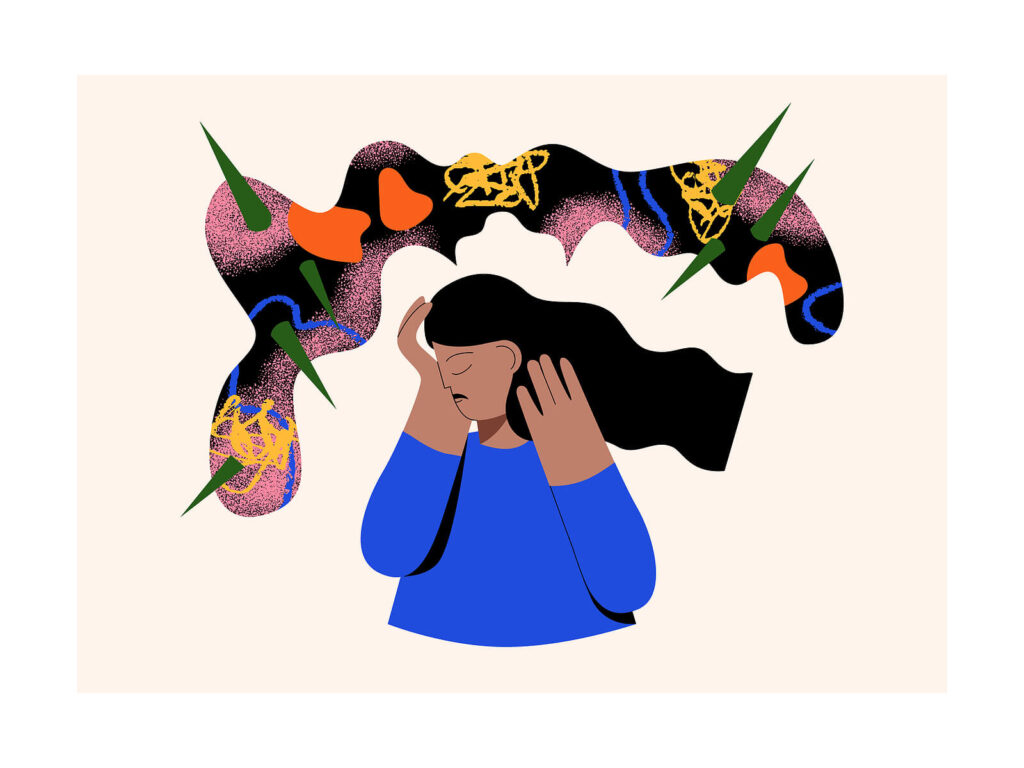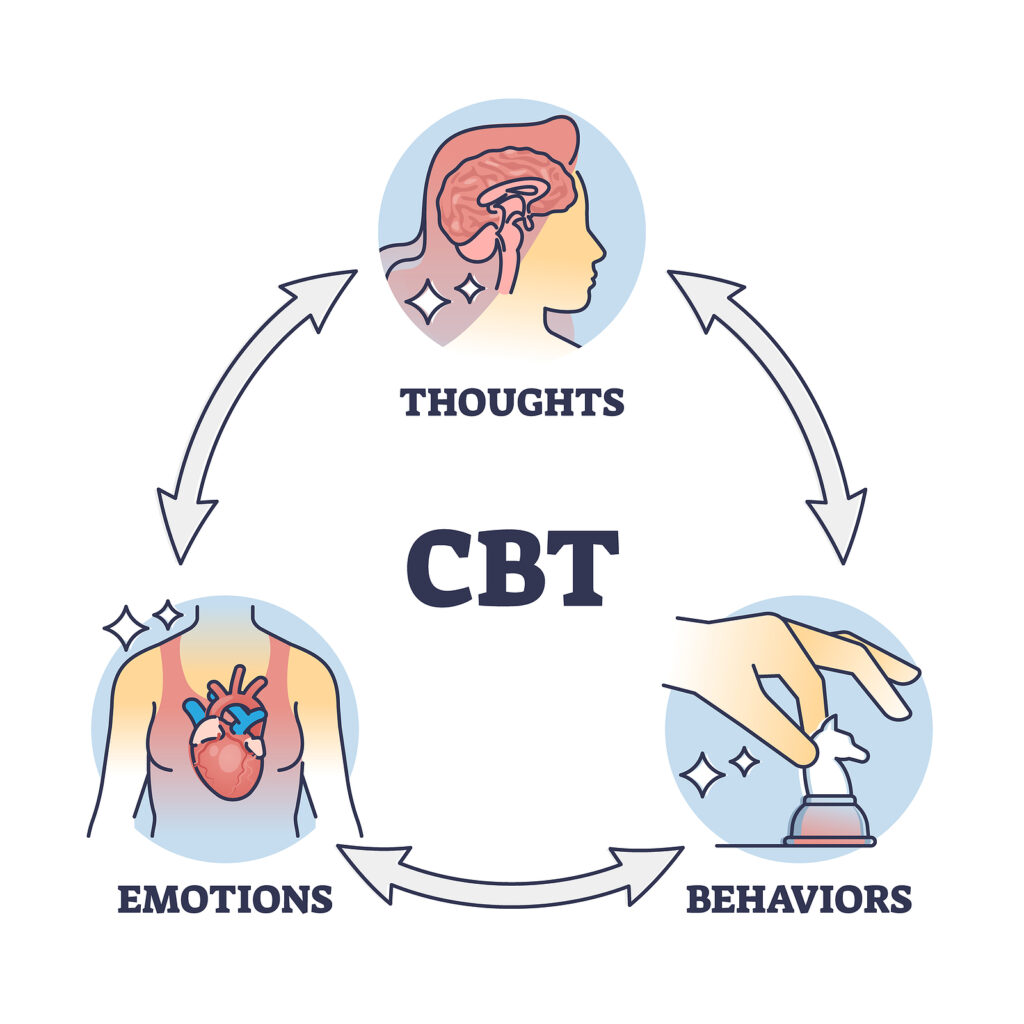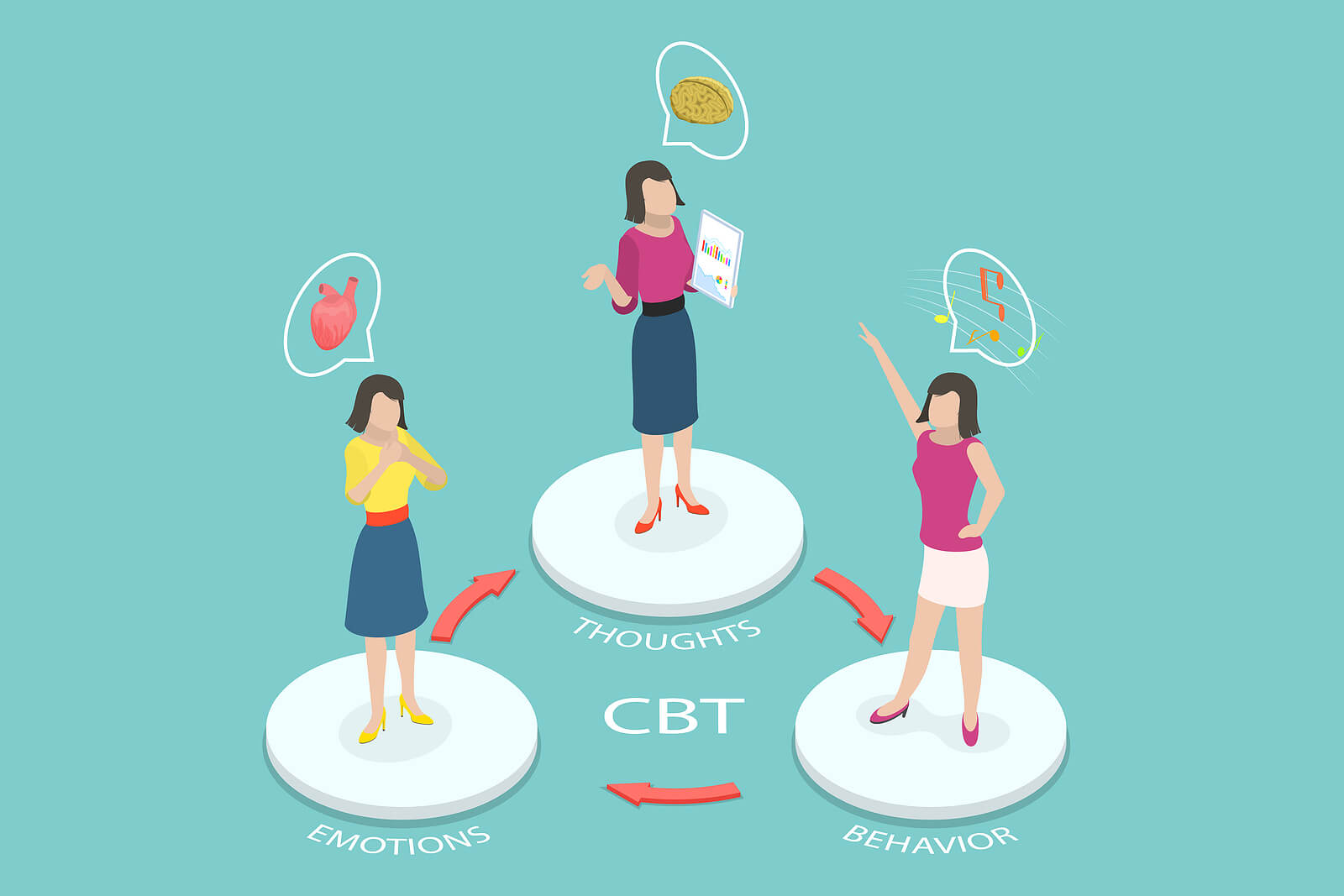There are hundreds of psychological treatments available, and cognitive behavioral therapy (CBT) is an intervention that has been emphasized in literature, treatment, and research. With all the buzz around CBT, the information on CBT can become convoluted. So, let’s break down several points: what is CBT and how does it work, what mental health conditions CBT can help with, what CBT treatment looks like, and lastly, is CBT right for you?

What is CBT and how does it work?
CBT is a form of psychological treatment that emphasizes how dysfunctional thinking patterns and behaviors can trap people in their struggles with mental health. The cognitive-behavioral model highlights how thoughts, emotions, and behaviors are interconnected and influence one another. For example, if a person experiences a significant amount of social anxiety, their thoughts in social situations may be: “I’m going to embarrass myself,” or “They will think I’m awkward.” As a result of these thoughts, the person might feel intense anxiety, fear, or embarrassment.
These thoughts and feelings might lead the person to engage in behaviors that avoid the social situation or limit their interaction with others. Thus, creating a cycle of anxiety and avoidance, which prevents the person from engaging in valuable social interactions. Considering this, CBT works with both thoughts and behaviors to address negative thought patterns to promote awareness and develop new skills for the improvement of psychological well-being (Coffey et al., 2015).
What mental health conditions can CBT help with?
With CBT being one of the most researched forms of psychological treatment, it is effective in helping with a wide range of mental health conditions. Research findings indicate that CBT is highly effective for several mental health conditions. This includes:
- depression
- generalized anxiety disorder
- panic disorder with or without agoraphobia
- social phobia
- PTSD
- childhood depressive and anxiety disorders
Additionally, CBT is effective for eating disorders. In particular, bulimia nervosa shows efficacy when used as an adjunct to pharmacotherapy in the treatment of schizophrenia. While considering the effects of CBT for a variety of disorders, CBT can also help with interpersonal conflict, anger, chronic pain, and other conditions. This includes childhood somatic disorders and various anxiety-related issues (Butler et al., 2006 & Hofmann et al., 2012).
Given its adaptability, CBT can be tailored to meet the unique goals of individuals, couples, or families, whether in individual therapy or group settings. Regarding long-term effects, CBT demonstrates lasting benefits across a variety of presenting issues. CBT is powerful in identifying difficulties and actively working towards overcoming them, helping to create and sustain long-term changes.
What does CBT treatment in New York City, NY look like?
While CBT highlights effective strategies for identifying and challenging negative thought patterns and their effects on emotions and behaviors skillfully, it also emphasizes other core principles. CBT at Kind Mind Psychology is a structured and goal-oriented treatment that emphasizes individual empowerment for creating change and developing effective behavior. The therapist-client relationship is collaborative. This means individuals are actively involved in their treatment, working towards gaining power and control over their mental health. CBT also recognizes that the issues addressed in therapy are not limited to the therapeutic setting but are real, everyday life concerns. Therefore, CBT emphasizes the use of effective skills and behavioral changes outside of sessions through the practical application of what is discussed in therapy to everyday life (Corey, 2017).

With an emphasis on collaboration, empathy, and active involvement, CBT is an action-oriented therapy that encourages individuals to make meaningful changes in their lives through empirically supported therapeutic techniques. During treatment, several techniques can be used to help navigate their presenting issues.
- Cognitive methods, such as cognitive restructuring, help individuals recognize dysfunctional, negative thinking patterns and replace them with more balanced and realistic ones.
- Behavioral methods, such as self-regulation skills, help individuals manage behaviors and emotional responses more effectively through relaxation or mindfulness strategies.
- Skill development is also encouraged. This way, individuals can learn practical skills that align with treatment goals to manage stress and regulate emotions.
Is CBT right for you?
Deciding if CBT is a treatment intervention you want to pursue is a nuanced question, just like considering any other form of therapy. However, some considerations about CBT can help make an informed decision.
- You are interested in learning and implementing skills that help you navigate challenges with effectiveness.
- You are open to taking control and working collaboratively in a therapeutic environment that focuses on your treatment goals.
- You want to take an active and hands-on approach to tackling your challenges.
- You want to identify patterns of negative thoughts and behaviors. Also, work to change them both in and outside of therapy.
- You are committed to making long-term changes by developing coping strategies and building resilience.

Ready to Take the Next Step with CBT?
If you’re feeling stuck in unhelpful thought patterns or behaviors, you’re not alone—and you don’t have to figure it out by yourself. At Kind Mind Psychology, our therapists offer evidence-based CBT in New York City to help you better understand your challenges and build the tools you need to create lasting change. Whether you’re navigating anxiety, depression, or stress, we’re here to support your growth with compassion, collaboration, and care.
- Reach out today to learn more about CBT and how we can help you move forward.
- Learn more about CBT by exploring our blog posts.
- Break free from patterns that no longer serve you!
Comprehensive Therapy Services in New York and North Carolina
In addition to CBT therapy in New York, Kind Mind Psychology offers a range of supportive services tailored to your unique needs. We provide LGBTQ+ affirming therapy, offering a safe space to explore and embrace your identity. Our couples therapy and sex therapy help partners strengthen their relationships and foster deeper connections. If you’re navigating the effects of past trauma, our trauma treatment services provide a compassionate, evidence-based approach to healing. Whether you’re seeking ADHD therapy, DBT, or online therapy, our team is here to support your growth and well-being every step of the way.
References
Butler, A. C., Chapman, J. E., Forman, E. M., & Beck, A. T. (2006). The empirical status of cognitive-behavioral therapy: a review of meta-analyses. Clinical psychology review, 26(1), 17–31. https://doi.org/10.1016/j.cpr.2005.07.003
Coffey, S. F., Banducci, A. N., & Vinci, C. (2015). Common Questions About Cognitive Behavior Therapy for Psychiatric Disorders. American Family Physician, 92(9), 807–812.
Corey, Gerald. (2017). Theory and practice of counseling and psychotherapy (10th Ed.). Boston: Cengage Learning.
Hofmann, S. G., Asnaani, A., Vonk, I. J., Sawyer, A. T., & Fang,
A. (2012). The Efficacy of Cognitive Behavioral Therapy: A Review of Meta-analyses. Cognitive therapy and research, 36(5), 427–440.

